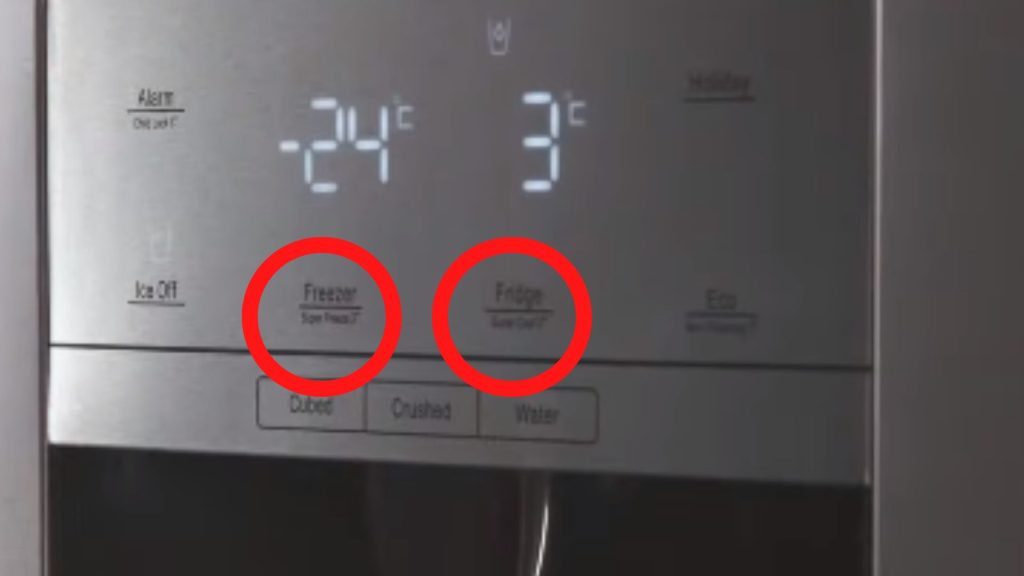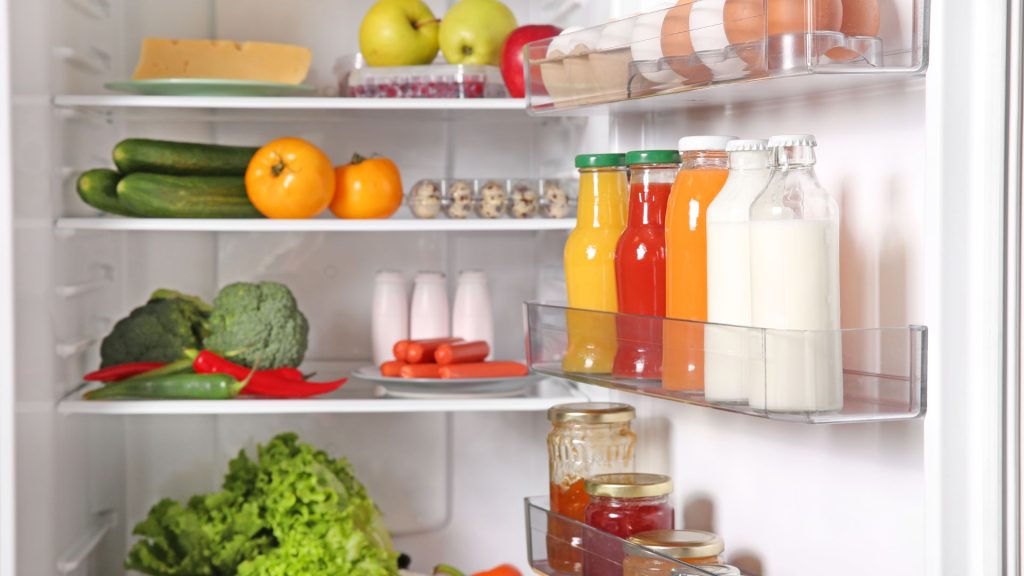A Hisense fridge won’t preserve your food unless you set the correct temperature. This guide will show you how to work the controls.
How To Set Temperature On Hisense Fridge?

Look for the ‘Fridge’ icon on the display. Pressing the icon will decrease the temperature by one degree. Stop pressing the icon once the display shows the temperature you want.
Pressing the ‘Super Cool’ icon allows the temperature to decrease rapidly. The super cool mechanism will last three hours before automatically switching off and permitting the appliance to revert to the previous temperature setting. If ‘Super Cool’ is illuminated, the super cool mechanism is still active. You can confirm your suspicions by looking at the temperature (35 degrees F).
Don’t expect the fridge’s temperature settings to influence the freezer. You must adjust the freezer’s temperature separately. Find the ‘Freezer’ icon. It is labeled accordingly. Every time you press it, the temperature will change by one degree. Keep pressing the icon until the screen shows the temperature you want.
Press the ‘Super Freeze’ icon to reduce the time it takes to freeze the contents of the freezer. The icon will remain illuminated until you deactivate the super freeze mechanism. Check the temperature. If it shows ‘-12 degrees F,’ ‘Super Freeze’ is active.
‘Super Freeze’ cannot remain active indefinitely. It will turn off after 26 hours. Although, if the appliance loses power while ‘Super Freeze’ is active, the mode will deactivate.
Keep in mind that using the energy-saver function affects the temperature settings. Energy saver mode will change the fridge temperature to 42 degrees F and the freezer to 2 degrees F.
Don’t leave the appliance in demo mode. Retailers use demo mode when the fridge is on display. The device acts like it’s working, but it can’t generate cold air. Make sure you deactivate demo mode before using the fridge. Otherwise, your food will rot.
Read How Long Should I Wait Before Plugging In A New Refrigerator?
What Temperature Should A Hisense Fridge Be Set At?
- Keep the temperature below 40 degrees F to preserve food without freezing it. Aim for 35 to 38 degrees F. Don’t lower the temperature to the lowest setting. First of all, your fridge will use more energy. Secondly, freezing temperatures are dangerous to conventional food in the lower compartments.
- The best temperature for a freezer ranges between -12 degrees C and -18 degrees C. You can afford to use the lowest temperatures for a freezer because a freezer’s contents can handle freezing temperatures.
- Keep in mind that it takes a Hisense fridge a while to respond to your temperature adjustments. But these appliances have mechanisms that expedite the freezing and cooling processes, at least temporarily.
- I suggest you set the fridge temperature at 39 degrees F and the freezer at 0 degrees F when you first start the Hisense refrigerator.
- The temperature on the display is the average temperature for the appliance. It doesn’t reflect the specific temperature in each compartment. The temperature in the individual compartments will vary depending on factors like the amount of food you added, the initial temperature of the contents, the position of the food, etc.
- Adjust the temperature in response to the weather. For instance, freezer temperatures in the summer will differ from freezer temperatures in the winter.
What Is the Coldest Setting On A Hisense Fridge?

2 degrees C for the fridge and -25 degrees C for the freezer. The exact temperature may vary depending on the model.
Things To Consider While Setting Up Temperature On Hisense Fridge
Setting the temperature on a Hisense fridge isn’t that hard. However, the appliance may disappoint you if you forget to consider the following:
1). Cooling Function
Don’t assume that the appliance is cooling your food simply because you connected the plug to a wall outlet and flipped the switch to the on position. According to Hisense, you can turn the cooling off. In other words, the fridge has power, but the cooling cycle has stopped.
If you keep adjusting the temperature, but the fridge refuses to cool your food, make sure the cooling mechanism is activated.
Setting the temperature on a refrigerator is relatively easy. People only ask this question when they buy a fridge from a different brand for the first time. Use the following guidelines to adjust the temperature on a Hisense fridge:
2). Controls
Identify the controls at your disposal. Don’t expect every brand to use the same control mechanisms. Some brands will change the controls with each model. Most manufacturers provide one of these options:
- Thermostat – It is common practice to include a thermostat with a dial that consumers can turn to adjust the temperature. Most thermostat dials have numbers that signify the temperature.
- Slide – Wikihow has a picture of a fridge that uses a sliding gauge to change the temperature. You can shift the gauge horizontally to elevate or lower the temperature. Sliding gauges are the easiest to use and understand. Dials with numbers are equally simplistic. However, some people don’t know whether the highest number signifies the coldest or the warmest temperature.
- Digital Display – Modern refrigerators use a digital display with a keypad. You can enter the temperature manually or use the plus and minus buttons.
2). Temperature Options
Do you understand the temperature options? Anyone can interpret a display that shows the exact temperature. But what about controls with numbers? If your dial shows numbers ranging from 1 to 7, which number signifies the coldest temperature?
This is where many homeowners fail. They think ‘1’ is the coldest setting when, in fact, it is the warmest. The coldest setting is ‘7.’ Get confirmation from the manual in case your model uses the opposite configuration (‘1’ for the coldest setting).
4). Ambient Temperature
The weather matters. For instance, the compressor will work harder to maintain the coldest settings during the hottest days of the summer. It will run continuously to satisfy your cooling needs, using more power in the process.
Winter produces the opposite reaction. Because ambient temperatures are very low, the fridge can use less energy to maintain the coldest settings. Pay attention to the sounds coming out of the compressor. You can damage a compressor by overworking the device.
Hisense manuals provide temperature recommendations for each season. If the recommendations have failed to deliver the results you expect, check the fridge’s surroundings.
Eliminate sources of heat in the vicinity, such as stoves and radiators. You don’t want to overwhelm the compressor by setting the lowest temperatures when removing the heat sources in the area is much easier.
5). Food
Use the manual to identify the correct temperatures for different contents. What does the manual say about fruits, vegetables, butter, cheese, milk, and the like? You don’t have to stick to these recommendations.
Use them as a starting point and make observations. You can raise or lower the temperature if the food items in question decompose or lose their flavor.
Don’t ignore the volume and arrangement of the food. Crowding the fridge will interfere with air circulation. Fewer contents can also cause harm if the food is too hot. Keep the items away from the back wall.
Use the manual to identify the air vents. This will allow you to keep the food away from the air vents. Blocking the vents will compromise the fridge’s cooling capabilities.
Related post:

